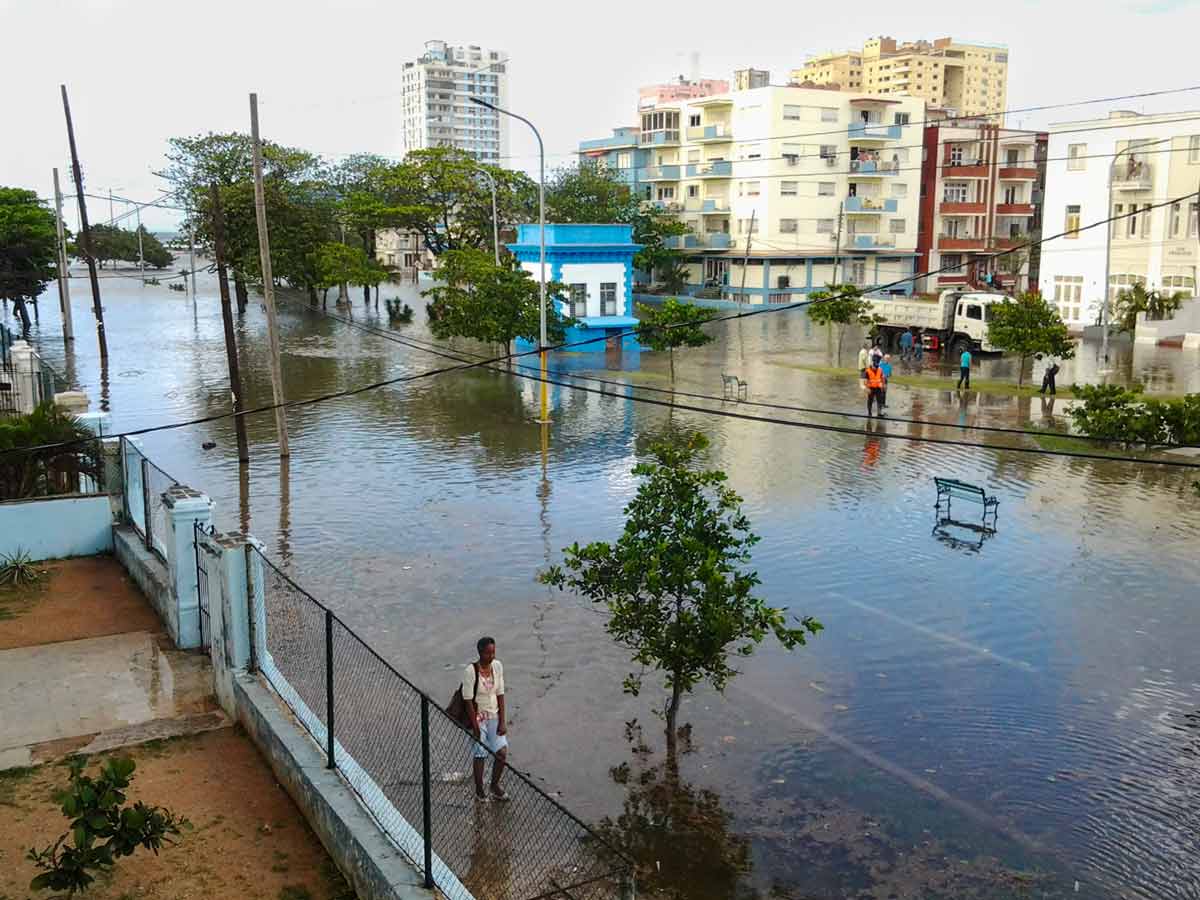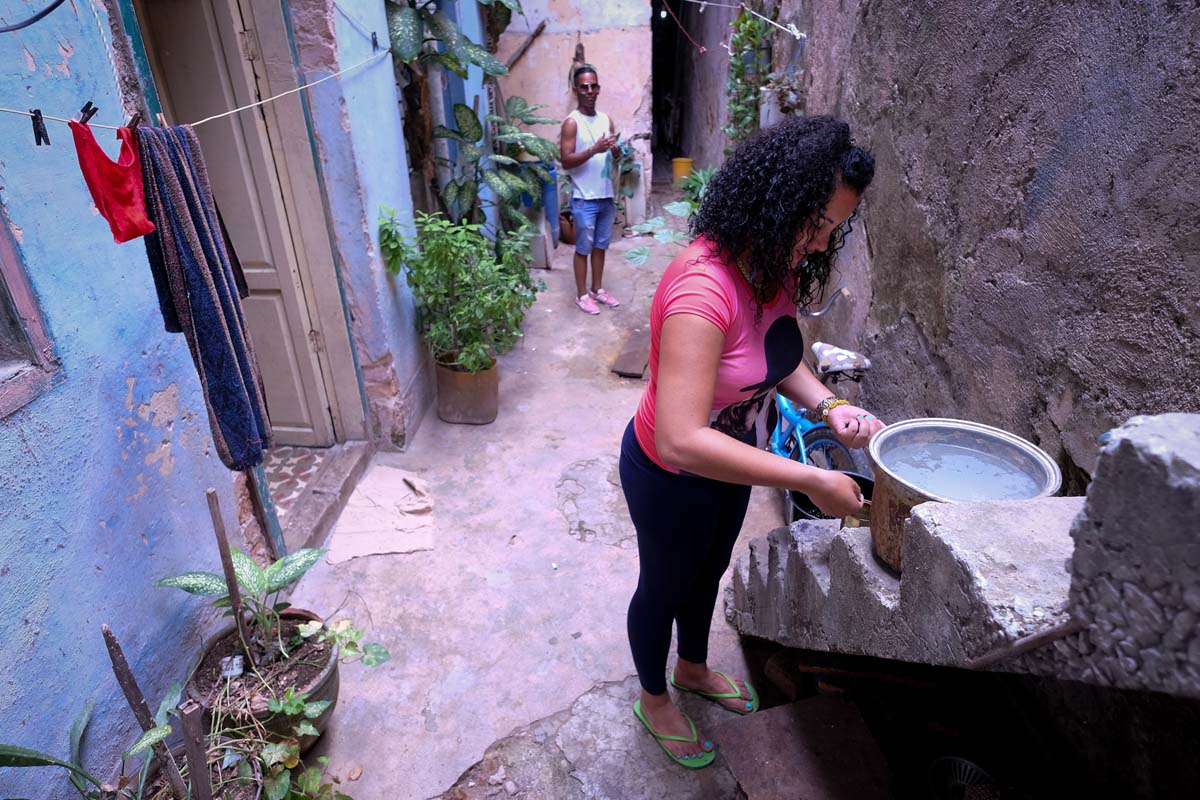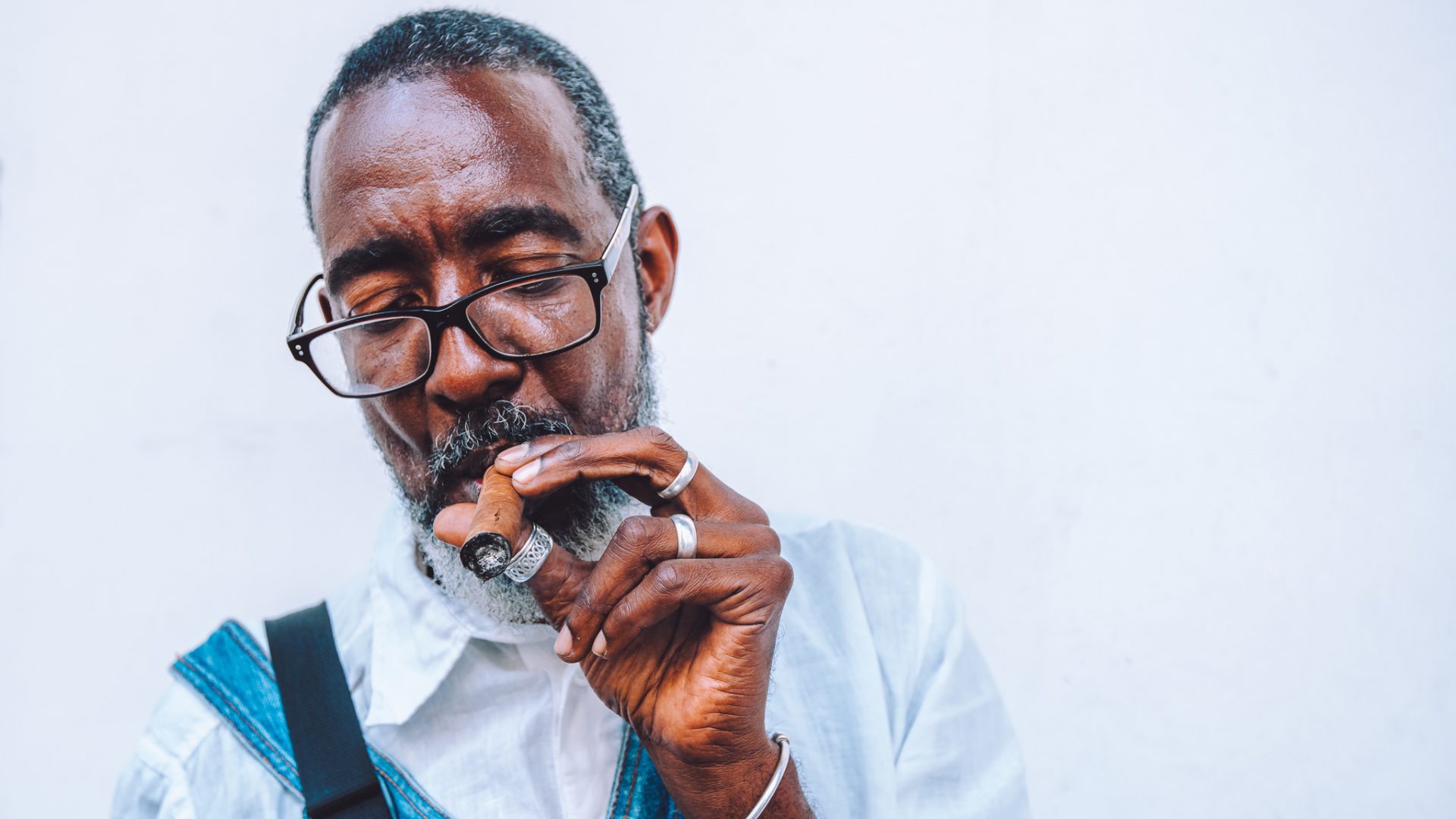Rising Seas
photo by Danielle Chanzes
While Cuba contributes little to the causes of climate change, its people are among the most vulnerable anywhere to a warming world.
By Danielle Chanzes
HAVANA – On a sunny day in May in Havana, children run up to the Malecón, the city’s iconic sea wall, and wait with excitement for a big wave to crash up and over the barrier, soaking the laughing kids and sending seaweed into the streets.
Cameras click as tourists capture the theatrics of the water reaching up two or three feet before it crashes back down over the wall. A young boy squeals with excitement as he and his caretaker run to escape the water and a spray of mist kisses his skin.
Havana residents say the spectacle, which draws hundreds of sightseers to the Malecón over three or four days, is not new. Water has always washed over the barrier during tidal surges, often from storms well out in the ocean. But these days, the phenomenon is happening far more frequently than it used to.
While the United States has rolled back climate policy under President Donald Trump and some American politicians still question the science of climate change, the issue is not in question in Cuba – for either the government or the people. Residents say more-frequent breaches of the Malecón are among everyday impacts from a changing climate.
Cira “Cirita” Longo has lived in Havana’s Vedado neighborhood for the past 31 years. Longo, age 68, lives just three blocks from the sea barrier and the Malecón. Earlier this year, the neighborhood’s streets flooded with seawater during what she called “un mal tiempo,” or a passing storm that occurred out at sea.

Flooding on Avenida Paseo earlier this year. (photo by Cira Longo)
She mentioned that while she’s experienced her fair share of floods, she’s never seen the streets overtaken so quickly. It took only 20 minutes for her neighborhood to fill with water. She described the large waves as relentlessly pouring over the seawall without pause. Nobody could believe how fast it all happened.
“In Cuba, we don’t have to convince anybody about climate change,” said Roberto Pérez Rivero, director of nature and community programs at Cuba’s Antonio Núñez Jiménez Foundation. “People are suffering and living it.”
As a low-lying island with more than 3,000 miles of coastline, Cuba is particularly vulnerable to the rising seas and increased storm activity associated with a warming globe. A quarter of residents live in coastal settlements. Many express frustration that their nation, with some of the lowest levels of greenhouse gas emissions that cause climate change, will be among the most-impacted by its effects.
In 2013, carbon dioxide emissions in Cuba were 3.5 metric tons per-capita compared with 16.4 for U.S residents, according to the World Bank. But the general trend of sea level rise around the island has been higher than the global average. Meanwhile the latest report of the Intergovernmental Panel on Climate Change predicts a startling 1.5 meters of sea-level rise by 2100 for Cuba.
Scientific data also show Cuba is seeing an increasingly warm and more extreme climate, including more severe rainfall and droughts such as the one now settled on the country. Cuba faces further warming and more extreme weather events in the future, according to the IPCC.
Coastal flooding caused by rising sea levels and tidal surges due to more-severe hurricanes, cold fronts and other extreme weather events pose the greatest threat to people. Still, as aware as the residents of Cuba are about climate change, they seem surprisingly unafraid of its effects.

The Vedado neighborhood as it normally appears, dry. (Photo by Jennifer Adler)
“Nobody in the neighborhood is afraid when the water rises,” Longo said. The people of Cuba seem confident that when disaster strikes, government will be there to help them and save lives.
The residents’ confidence is to some extent justified. Cuba is ahead of the curve when it comes to disaster relief after half a century of programs focused on reducing loss of life and property damage.
Father Orlando Gonzalez Diaz, 54, of Our Lady of Regla Church in the port town of Regla across the harbor from Havana, said people have faith because Cuba has created so many institutions and systems to deal with hurricanes and natural disasters. The republic has advanced warning systems and well-coordinated evacuation plans.
Cuban citizens receive education and training that prepares them to evacuate in the case of natural disaster and statistics show that these strategies have been effective so far. Though natural disasters have caused immense damage to the country in recent years, they rarely result in loss of life.
Take for example Hurricane Sandy, which dominated the American news cycle after devastating the northeastern United States on October 29, 2012.
The storm was at its peak intensity when it hit Santiago de Cuba as a Category 3 hurricane. Though Sandy was devastating and caused considerable damage to homes and infrastructure, only 11 deaths were reported, compared with 117 reported deaths in the U.S.
“Fortunately in Cuba the hurricanes that have hit in the past 50 years have rarely caused human deaths,” said Gonzalez.
Yet, residents may have a false sense of security. What the small island government cannot do is stop the climate from changing.
Therein lies the frustration of people watching carbon emissions rise and the U.S. commitment retreat. Cuba is among a league of small island nations bearing the brunt of a problem its people hardly contribute to and cannot control.
“The only thing we can do, especially in a country where our ecological footprint is very small, and we don’t have emissions,” said Pérez Rivero, “is brace ourselves.” Stricter coastal development regulations and even tear-downs of some coastal structures are underway. The plans are the start of what Pérez Rivero calls an “organized retreat” that is also restoring coastal ecosystems and their ability to buffer the nation from storms.
The residents of Vedado understand that in time, they may have to move. “When the sea rises it destroys,” says Longo.
Though the government promises protection of property, moving people and belongings to higher ground and rebuilding homes damaged or destroyed by natural disasters, it built only 519,450 new housing units between 2000-2012. Hurricane Sandy alone damaged more than 132,000 units. Putting the global effort to help all nations mitigate and adapt to climate change back on track would help the most vulnerable, and the rest of the world too.
Back in Vedado, Longo says old timers, or “viejos,” talk about how the neighborhood used to be submerged rock before settlers drained and built upon it. With what is occurring now, they say, “the sea is coming to take back what man took.”
READ NEXT

Waiting for Water
Cuba seems like a water-rich country. But it has always struggled to provide enough fresh water for its people. Read More »

Imperiled Souvenirs
Wildlife advocates say illegal hunting and sales of tortugas – and other endangered species – are related to poverty. Can shoppers help save these endangered sea turtles? Read More »

Chapter 2: Art Expression
In Havana, we explore a thriving art scene and how Cubans reflect their lives through the works they create. Read More »
